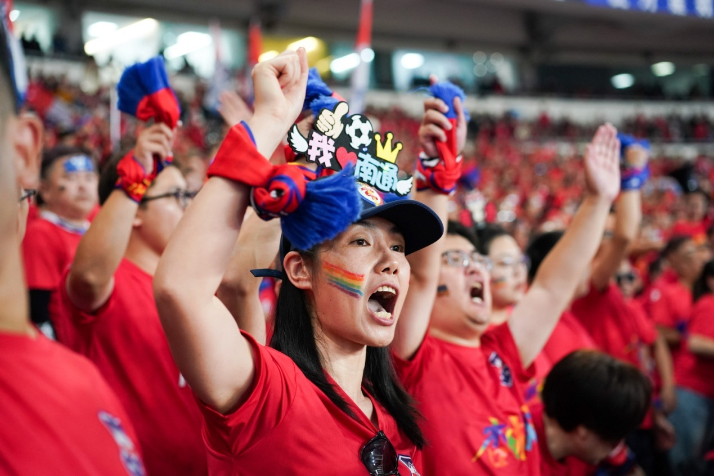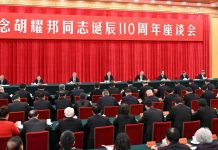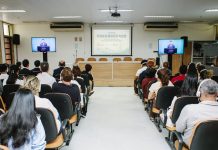The opening ceremony of the 15th National Games in Guangzhou, Guangdong Province, on November 9 was more than a spectacle of light and sound. It was a powerful statement. As the vibrant tapestry of local culture in south China unfolded, it wasn’t just heralding the beginning of China’s highest level domestic sports competition; it was showing a profound shift.
For decades, the National Games have served a purpose: to be the Olympic Games training ground. With the value of sports measured in gold medals and world records, the Games have been a crucible for forging champions who would elevate national prestige on the global stage.
But the narrative has been quietly changing. The National Games arena is embracing its identity also as a platform for promoting public participation in sports, marking a pivotal chapter in China’s ambitious journey to become a leading sports nation.
This transformation from a medal-centric stage to an inclusive, people-oriented event is not merely a change in marketing slogans. It is a deliberate, top-down policy evolution, reflecting a nation’s growing confidence and a redefined understanding of what it means to be a sports powerhouse. True strength, it seems, is no longer found only on the Olympic podium, but in the bustling public parks, the newly emerging “village soccer super league,” and the everyday health of its 1.4 billion citizens.

The strategic shift
This year’s National Games, jointly hosted by Guangdong and Hong Kong and Macao special administrative regions, are taking place in the Greater Bay Area until November 21. The Games, held once every four years, have a competition program similar to that of the Olympics. Over 14,000 professional athletes are competing in this year’s competitive events and mass sports events have involved more than 1 million amateurs.
The origins of the National Games are deeply rooted in national identity. Inaugurated in 1959 to commemorate the 10th anniversary of the founding of the People’s Republic of China, the first Games were a symbol of resilience and burgeoning statehood. For years, its primary function was clear: to identify and hone talent for the international arena, particularly the Olympics. The whole-nation system, which marshaled state resources to develop elite athletes, found its expression in the National Games.
The success of this model is undeniable. It has produced legends and propelled China into the upper echelons of Olympic medal tables. However, following the spectacular 2008 Beijing Olympics, a quiet shift began. The question was no longer just “How many golds can we win?” but “How can the power of sports benefit every single citizen?”
The results of this introspection have been codified into policy. In 2008, August 8, the opening day of the Beijing Olympics, was designated as National Fitness Day, a symbolic move to channel Olympic fervor into public participation. The momentum increased in 2014, when the State Council issued guidelines explicitly elevating fitness for all to a national strategy.
The National Games, as the pinnacle of the domestic sports system, were the obvious platform for carrying out this new directive. The change was both symbolic and structural. The 2017 National Games in Tianjin Municipality served as a watershed moment, introducing 126 amateur events in 19 sports that brought 70,000 ordinary citizens—factory workers, students, retirees—onto the same stage as Olympic champions. Now, the 2025 Games in the Greater Bay Area have expanded this further, featuring 166 events for amateurs in 23 sports, including dragon boat racing, weiqi (Go), roller-skating and lion dance.
Gao Zhidan, head of the General Administration of Sport of China (GASC), has articulated this multifaceted vision clearly: “Sports are an important means to meet people’s aspirations for a better life, a significant driver for economic and social development, and a key platform for showcasing national cultural soft power.” The National Games are now aligned in pursuit of these goals.

The shared arena
The most visible manifestation of this transformation is the literal sharing of the arena. The 15th National Games brilliantly blurred the lines between the superstars and amateurs, creating a powerful sense of a shared national endeavor.
Consider the torch relay. Once the domain of celebrated athletes, the torchbearers for this Games were a mosaic of Chinese society. Alongside sporting icons were grassroots sports workers, delivery drivers, sanitation workers, and community volunteers. The flame was no longer just a symbol of elite competition; it became a beacon for collective spirit.
This ethos reached its apex at the opening ceremony. Among the torchbearers at the ceremony was Lai Xuanzhi, a primary school physical education teacher. Though not a competitive athlete himself, Lai is a giant of grassroots sports education. Faced with a rural school lacking sports facilities, he trained students to jump rope. Through ingenuity and dedication, he invented the half-squat skipping technique, crafted lightweight jump ropes from motorcycle brake cables, and cultivated an astonishing 52 world champion jump ropers among his students, breaking 13 world records. His presence, passing the torch alongside celebrated professional athletes, was a profound statement: The sports educator is as worthy of honor as most gifted athletes.
On the competition floor, this “shared arena” philosophy came to life. The mass-participation events were not sidelined; they were integral. On the gateball courts, competitors aged from 19 to 70 swung their mallets with equal passion. In the air volleyball finals, 59-year-old Hu Yue, the oldest player on the Guangdong women’s team, radiated pure joy despite finishing fourth. Her story was not about the medal that got away, but about the enduring happiness that sports provide.
Even the legends, the very products of the old system, are now embodying the spirit of the new. Table tennis maestro Ma Long, at 37, is on his sixth and likely final National Games campaign. Already a “super grand slam” winner, he is chasing the one title that has eluded him: a men’s team gold at the National Games. His persistence is no longer just about personal glory, but about loyalty to his Beijing team and the love of the game. Similarly, sprinter Su Bingtian, the “Asian Flash” who broke the 10-second barrier, chose to cherish this opportunity to fulfil his duty in the 4x100m relay, passing the baton—and his legacy—to the next generation.
Their stories, covered with the same reverence as their Olympic triumphs, are woven into a broader narrative that now includes the grassroots hero. The message is clear: Every participant, from star athletes to a first-time mass-event competitor, is a vital part of China’s sporting ecosystem.

Sports as a growth engine
The transformation of the National Games is both a cause and effect of a wider phenomenon sweeping China: the recognition of sports as a potent economic and social catalyst. Beyond the stadiums of the Games, a grassroots sports economy is booming, demonstrating that the national fitness strategy is also a savvy economic policy.
The most dazzling example is the “Su Chao” (Jiangsu Super League). What began as an amateur soccer league has exploded into a blueprint for regional development. Its model is a masterclass in integration. With tickets priced accessibly between 5 and 20 yuan ($0.7-2.81), the league ensured mass appeal. The real genius, however, was leveraging that popularity to boost local economy. A match ticket doubled as a passport, granting holders free access to local tourist sites, complimentary meals, and discounts on accommodation.
The economic ripple effect was staggering. According to the Jiangsu Provincial Administration of Sport, for every yuan ($0.14) spent on a ticket, 7.3 yuan ($1) was generated in peripheral consumption. During the 2025 season, sales of soccer gear in Jiangsu surged nearly 80 percent, and broader entertainment-related spending skyrocketed 34.6 percent. One online campaign alone stimulated over 13.5 billion yuan ($1.89 billion) in consumption in just two months.
As Peng Guoqiang, Dean of the School of Physical Education and Humanities at Nanjing Sport Institute and Vice President of the China Competitive Sports Research Institute, noted, “The Su Chao has broken the traditional model of event operations… It transforms sports venues into consumption hotspots, turns the competitive stage into an economic engine, and extends watching a game into a weekend vacation.”
This synergy is being replicated nationwide, from the blazingly popular Village Soccer Super League (Cun Chao) in Guizhou to emerging urban sports festivals. The policy of “bringing sporting events into scenic spots, streets, and business districts” and the trend of “traveling to follow the sports events” have made sports a golden key for unlocking domestic consumption and fostering integrated cultural-tourism-commerce development.
Building the foundation
None of this participation is possible without infrastructure. The ambitious drive to build “15-minute fitness circles”—where urban residents can access sports facilities within a 15-minute walk—has yielded remarkable results. By the end of 2024, China’s total sports venue area had reached 4.23 billion square meters, a massive increase from just a few years prior. The country has built over 1,300 sports parks, and in less than three years, installed over 170,000 fitness facilities in older residential communities and urban parks.
“This 15-minute fitness circle goal has now been largely realized in communities,” said Ding Dong, Director of the Mass Sports Department of the GASC.
This infrastructure push is characterized by ingenuity. Idle spaces under overpasses, in old factories, and in urban corners are being repurposed into vibrant, well-lit courts and fitness stations. A disused factory in Langfang, Hebei Province, became a community sports center; the space beneath a metro bridge in Shenzhen, Guangdong Province, was transformed into a pickleball and badminton court. These are examples of the priority placed on sports development as part of urban renewal, making fitness a convenient and integrated part of daily life.
Simultaneously, a renewed focus is being placed on youth health and fitness. In addressing concerns over adolescent myopia and obesity, sports are a crucial intervention. Initiatives like the “Running Youth” campaign, which involved 151 million participants in over 145,000 activities, aim to instill a “health first” mindset from an early age. The emergence of events like the Ivy International Schoolympics, which creates a compelling sports-education synergy, and the development of robust “city-county-school” youth competition systems in places like Heze, Shandong Province, shows a concerted effort to build a sustainable talent pipeline and a healthier future generation.
A new chapter
The journey of the National Games mirrors China’s own journey in the world of sports. It began with a need for recognition, measured in the hard currency of Olympic medals. Today, it reflects a more mature, holistic and ambitious vision. A true sports power is not just defined by the height of its podium but by the depth of its participation, the health of its people, and the vitality of its sporting culture.
The Games are not only about athletic brilliance, but also about empowered participation. The National Games have finally become what its name suggested: a true games for the entire nation, proving that the most significant victory is not just winning gold, but getting a nation to fall in love with sports itself. –The Daily Mail-Beijing Review News exchange item





